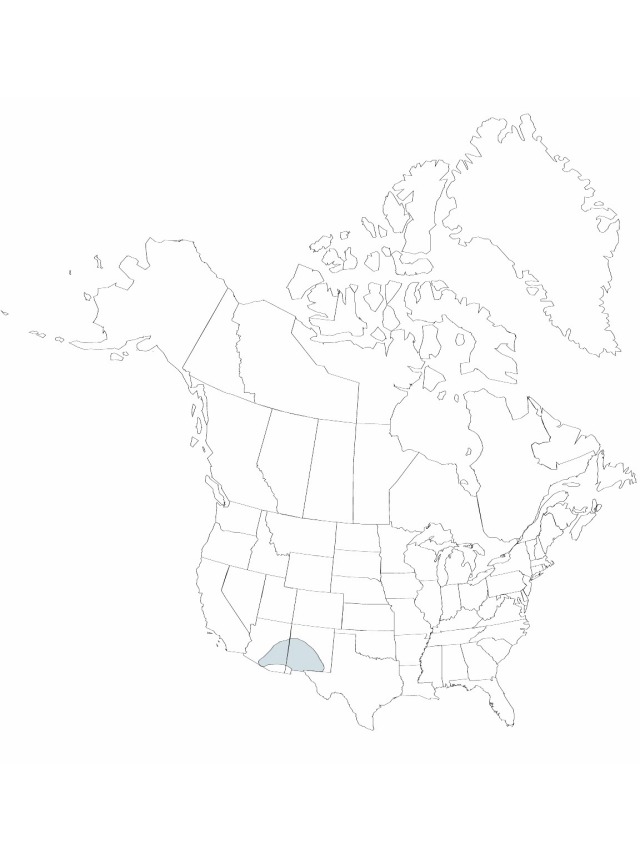Difference between revisions of "Tradescantia occidentalis var. scopulorum"
Contr. Arnold Arbor. 9: 106. 1935.
FNA>Volume Importer |
FNA>Volume Importer |
||
| Line 25: | Line 25: | ||
|habitat=Moist canyons and stream banks | |habitat=Moist canyons and stream banks | ||
|distribution=Ariz.;N.Mex. | |distribution=Ariz.;N.Mex. | ||
| − | |discussion=<p>The two varieties intergrade; the only absolute difference between them is sepal pubescence. Tradescantia occidentalis var. scopulorum evidently was defined more broadly by W. C. Martin and C. R. Hutchins (1980), so the distribution I have shown for New Mexico could be too wide. A broader circumscription of this variety has also been used by others (C. Sinclair 1967; M. Bolick 1986), but I have not accepted these records.</p><!-- | + | |discussion=<p>The two varieties intergrade; the only absolute difference between them is sepal pubescence. <i>Tradescantia occidentalis </i>var.<i> scopulorum</i> evidently was defined more broadly by W. C. Martin and C. R. Hutchins (1980), so the distribution I have shown for New Mexico could be too wide. A broader circumscription of this variety has also been used by others (C. Sinclair 1967; M. Bolick 1986), but I have not accepted these records.</p><!-- |
| − | --><p>Most specimens of Tradescantia occidentalis from Arkansas and Louisiana have an apical tuft of eglandular hairs on the sepals, a character acquired through introgression with T. ohiensis (E. Anderson and R. E. Woodson Jr. 1935).</p><!-- | + | --><p>Most specimens of <i>Tradescantia occidentalis</i> from Arkansas and Louisiana have an apical tuft of eglandular hairs on the sepals, a character acquired through introgression with <i>T. ohiensis</i> (E. Anderson and R. E. Woodson Jr. 1935).</p><!-- |
| − | --><p>Tradescantia occidentalis var. melanthera has been described for plants from Arkansas, Louisiana, eastern Texas and eastern Oklahoma that have dark anther connectives (D. T. MacRoberts 1977). I have not been able to recognize this character in dried specimens with any consistency.</p> | + | --><p><i>Tradescantia occidentalis</i> var. melanthera has been described for plants from Arkansas, Louisiana, eastern Texas and eastern Oklahoma that have dark anther connectives (D. T. MacRoberts 1977). I have not been able to recognize this character in dried specimens with any consistency.</p> |
|tables= | |tables= | ||
|references= | |references= | ||
| Line 50: | Line 50: | ||
|publication year=1935 | |publication year=1935 | ||
|special status= | |special status= | ||
| − | |source xml=https://jpend@bitbucket.org/aafc-mbb/fna-data-curation.git/src/ | + | |source xml=https://jpend@bitbucket.org/aafc-mbb/fna-data-curation.git/src/8f726806613d60c220dc4493de13607dd3150896/coarse_grained_fna_xml/V22/V22_122.xml |
|genus=Tradescantia | |genus=Tradescantia | ||
|species=Tradescantia occidentalis | |species=Tradescantia occidentalis | ||
Revision as of 16:55, 18 September 2019
Stems 14–35 cm. Leaves: blade 5–45 × 0.4–0.9 cm. Flowers: pedicels 1–2 cm, glabrous; sepals 5–8 mm, glabrous; petals bright blue, 0.7–1 cm.
Phenology: Flowering spring–summer, fall (Apr–Aug, Oct).
Habitat: Moist canyons and stream banks
Discussion
The two varieties intergrade; the only absolute difference between them is sepal pubescence. Tradescantia occidentalis var. scopulorum evidently was defined more broadly by W. C. Martin and C. R. Hutchins (1980), so the distribution I have shown for New Mexico could be too wide. A broader circumscription of this variety has also been used by others (C. Sinclair 1967; M. Bolick 1986), but I have not accepted these records.
Most specimens of Tradescantia occidentalis from Arkansas and Louisiana have an apical tuft of eglandular hairs on the sepals, a character acquired through introgression with T. ohiensis (E. Anderson and R. E. Woodson Jr. 1935).
Tradescantia occidentalis var. melanthera has been described for plants from Arkansas, Louisiana, eastern Texas and eastern Oklahoma that have dark anther connectives (D. T. MacRoberts 1977). I have not been able to recognize this character in dried specimens with any consistency.
Selected References
None.
